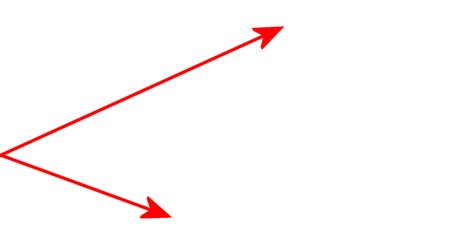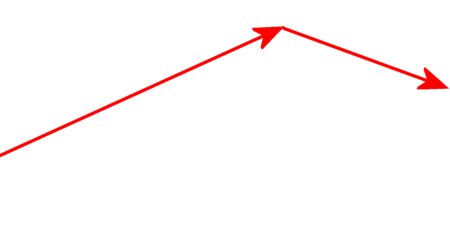|
|
|
||||||||
| |||||||||
|
|
A B C D E F G H I J K L M N O P Q R S T U V W X Y Z
| ||||||||
| Previous page |
A force has a numeric value and a direction. It is shown by an arrow, the length of which is proportional to the numeric value.
Above you can see an example of the force's usual dilemma. The winch must muster up a lot more force than it would have to, if it could pull in a straight line. Indeed, perhaps there's no tree available or it's too far away. The tow-rope also can't be used much longer, because the effective force in the direction of travel is ever increasing and the straight-line force is becoming weaker and weaker.

In this case, two forces are pulling on the same point. The question is, how can one determine the effect of both forces together? The arrows, which represent the forces, can be shifted. Now, one of the forces is laid onto the end of the other.

You can now see the effect of the thus united forces. All you have to do, is shift one arrow away from the from the original starting point, to the end point (on the right) of the other. This forces replacing these two are called the original- and the resultant forces, because these can show the effect of the two together, very well.
You may ask yourself, where e.g., when driving a car, does one have to deal with the effects of two forces. You won't have to look very far long. Let's assume that you're driving in a curve. You may already have wondered why there is less grip available for acceleration when cornering. Or indeed, why the car tends to break away when accelerating or braking (without ABS) in a curve.
In this case, there are two forces being applied. One is pulling the car forwards and the other would apparently, rather drag the car into the ditch or towards the soft shoulder. What is important, is that the one weakens the other. Thus, you can never achieve e.g., the full acceleration and simultaneously, take this particular curve at the highest possible speed. It would more likely be possible with all-wheel drive on a road surface offering a good deal of grip, because this would divide the propelling forces between the two axles, which would leave a bit more lateral guiding force on the drive axle.
| 'Read more about Kamms friction-circle here. |
| Next page |
2001-2015 Copyright programs, texts, animations, pictures: H. Huppertz - E-Mail
Translator: Don Leslie - Email: lesdon@t-online.de

